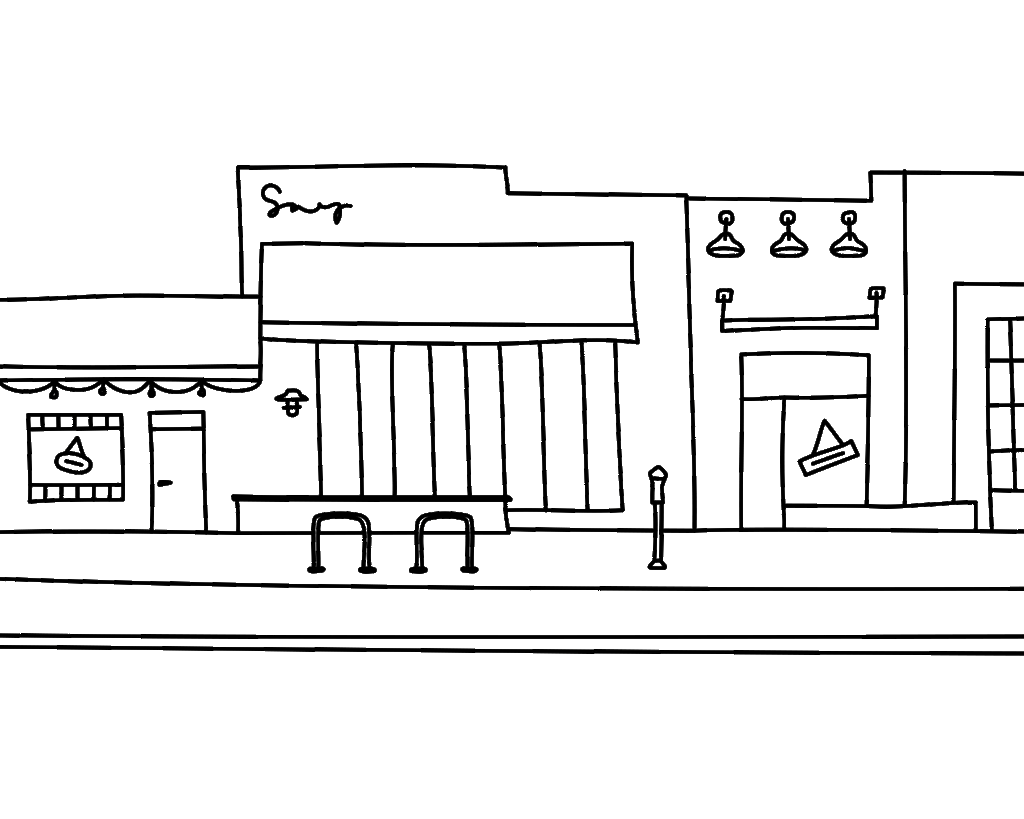Is This the End of the Golden Age of Dining?
“Heraclitus once wrote that it is impossible to step in the same river twice. In Los Angeles, it can be nearly impossible to eat in the same restaurant twice. This is, I believe, what the economists call creative destruction. And it is not impossible here to experience extremes — restaurants that are born and die in a single evening; restaurants in suburbs so distant that they may as well be theoretical; restaurants so hard to get into that they may not actually exist outside of blogs."
"Los Angeles is where the modern restaurant was born, the good, the bad and the ugly of it, and we’re too far gone to stop now.”
- Jonathan Gold
Recently I watched City of Gold, the 2015 documentary detailing legendary food critic Jonathan Gold’s culinary contributions to Los Angeles. Directed by Laura Gobbert, the doc follows Gold as he traverses the freewheeling freeways of LA, zooming through the belly of the beast in his old Ram 1500 in search of a good bite.
Flashes of mom and pop spots, food trucks, and sidewalk tortillerias dance on screen in a dizzying dream of charred meat and paper plates. Bludso’s, Mariscos Jalisco, Jitlada – places that are less restaurants than they are cultural institutions – weave in and out of frame as Gold barrels down Pico, Sunset, anywhere, his left hand resting on the wheel as his right gesticulates to the camera.

Over the past couple decades, Los Angeles has undergone a culinary renaissance led by the late Gold, whose critiques put hole-in-the-wall spots on the map and breathed a new life into the city’s food scene. The “Gold effect,” as some have called it, saved countless struggling restaurants long before other major critics and publications were even looking their way. What Anthony Bourdain did for the far-flung food stalls of Chiang Mai and bountiful banquets of Reykjavik, Jonathan Gold did for Los Angeles.
And then, like a flash in a pan, both of them were gone. Gold and Bourdain died in the summer of 2018, just one month apart and two years before the hospitality industry would crumble under the mandated closures of bars and restaurants and an economic recession that would rival that of the Great Depression. As heart-wrenching and deeply personal as the loss of Gold and Bourdain felt in 2018, somehow it’s even more palpable now, as restaurants shutter their doors in alarming numbers and headlines blare the sad siren song,
“Is this the end of the golden age of dining?”
It’s a declaration critics have been swift to jump to ever since it was first decreed that we were, in fact, in the midst of a golden age. But the promise looms larger now, its fate seeming more and more inevitable. Which restaurants will weather this storm? What will become of the state of dining as we know it? With Gold and Bourdain gone, who will advocate for the busboys, the bartenders, the band of misfit toys that make up this industry?
Trois Mec, the Gold-approved, Michelin-starred, and Ludo Lefebvre-led tasting menu in Hollywood was one of the first of many upscale, inventive restaurants to close in the wake of the pandemic. Its sister restaurant, Petit Trois, still stands, though its future – like so many of the bars and restaurants that already barely get by on paper-thin margins – becomes less and less certain every day.
Others, like Here’s Looking at You in Koreatown and Broken Spanish Downtown, have suffered the same fate. Ma’am Sir, a modern Filipino restaurant in Silver Lake that did for Filipino food what Night + Market did for Thai, just recently joined their ranks. Every day the number swells, not just in Los Angeles but in cities and suburbs and small towns around the world. Our cultural meccas are dwindling as fast-casual chains continue to survive and thrive, threatening to take over.
As a newcomer to Los Angeles, one of the millions who have trekked from some small town somewhere to this City of Angels, I have felt a peculiar sadness over the loss of these restaurants that were never mine. Restaurants that were erased from my list of places “to try” almost as quickly as they were added. It’s a strange phantom grief, mourning something you never – and will never – know. And of course, it applies to more than just food; this year has brought with it countless trips that will never be taken, memories that will never be made. But there is something about the fleetingness of a restaurant that makes its loss especially devastating; Italy will still be there when you inevitably take that trip. The Coliseum will still stand. But will the corner pizzeria?
According to writer Kevin Alexander, the end of the golden age of dining began before COVID even hit. In Burn The Ice, his 2019 book, Alexander argues that the golden age started in 2006 with the rise of farm-to-table restaurants in Portland and the launch of Anthony Bourdain’s No Reservations. What followed was a decade-long stint of fine casual dining, a “golden age” in which good food and good drinks were championed above all else. Of course, it had to come to an end. Everything does. But the timing of that ending feels startlingly ominous, the future far too bleak.

At the time Burn The Ice was published, Alexander wrote that there were 100,000 more restaurants in the US in 2019 than there were 10 years ago. In the past six months alone, another 100,000 have closed. It’s grim, sure. An erasure of a decade of dining in America. But if we’re back at square one, so to speak, if we’re starting over exactly where we were in 2006 when farm-to-table was a new concept and Anthony Bourdain was just some sly, rough around the edges chef we had never heard of, then maybe it means that we are on the precipice of another golden age. That when this is all over – when restaurants get back up on their feet and start again – they’ll be stronger than ever.
During the 1992 Los Angeles riots, Jonathan Gold penned an essay for the LA Times on his neighborhood, Koreatown, “a neighborhood just west of downtown.” He wrote of the Bangkok-style buffets and Filipino fish joints that were burned to the ground, entire livelihoods diminished to ashes. The picture he painted then looked stunningly similar to what it looks like now: neighborhoods in a state of unrest and upheaval, boarded up buildings, signs that have always read “open” turned to say “closed.”
History repeats itself, again and again in an infinite time loop. That much we know. And as much as I wish Gold – and Bourdain – were here to offer their sage wisdom, in a way they have already given that to us.
“And yet the neighborhood survives,” Gold wrote in 1992, his words echoing through time and space to a moment 28 years removed that is more alike than it is different. We have rebuilt before. We can do it again.

